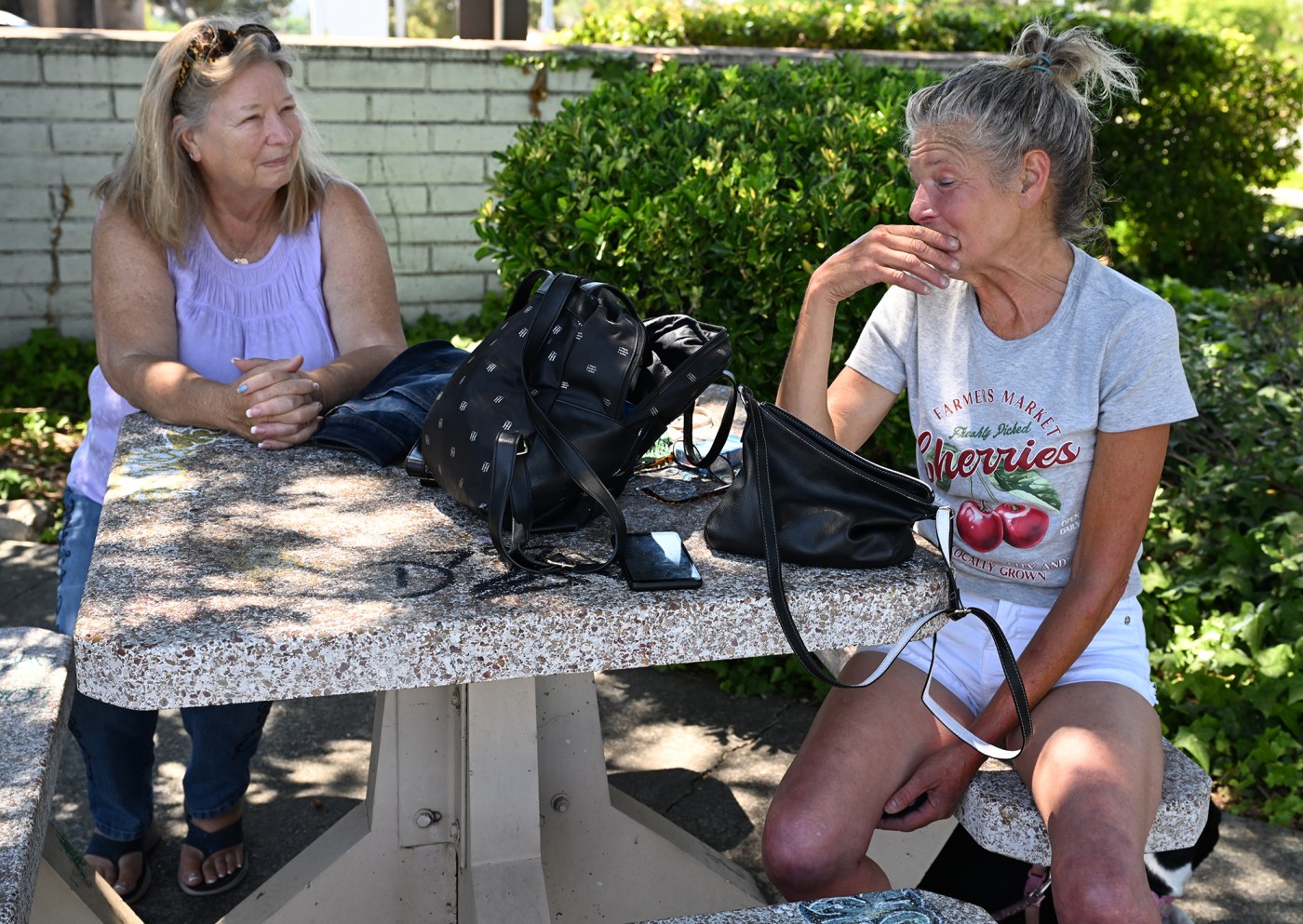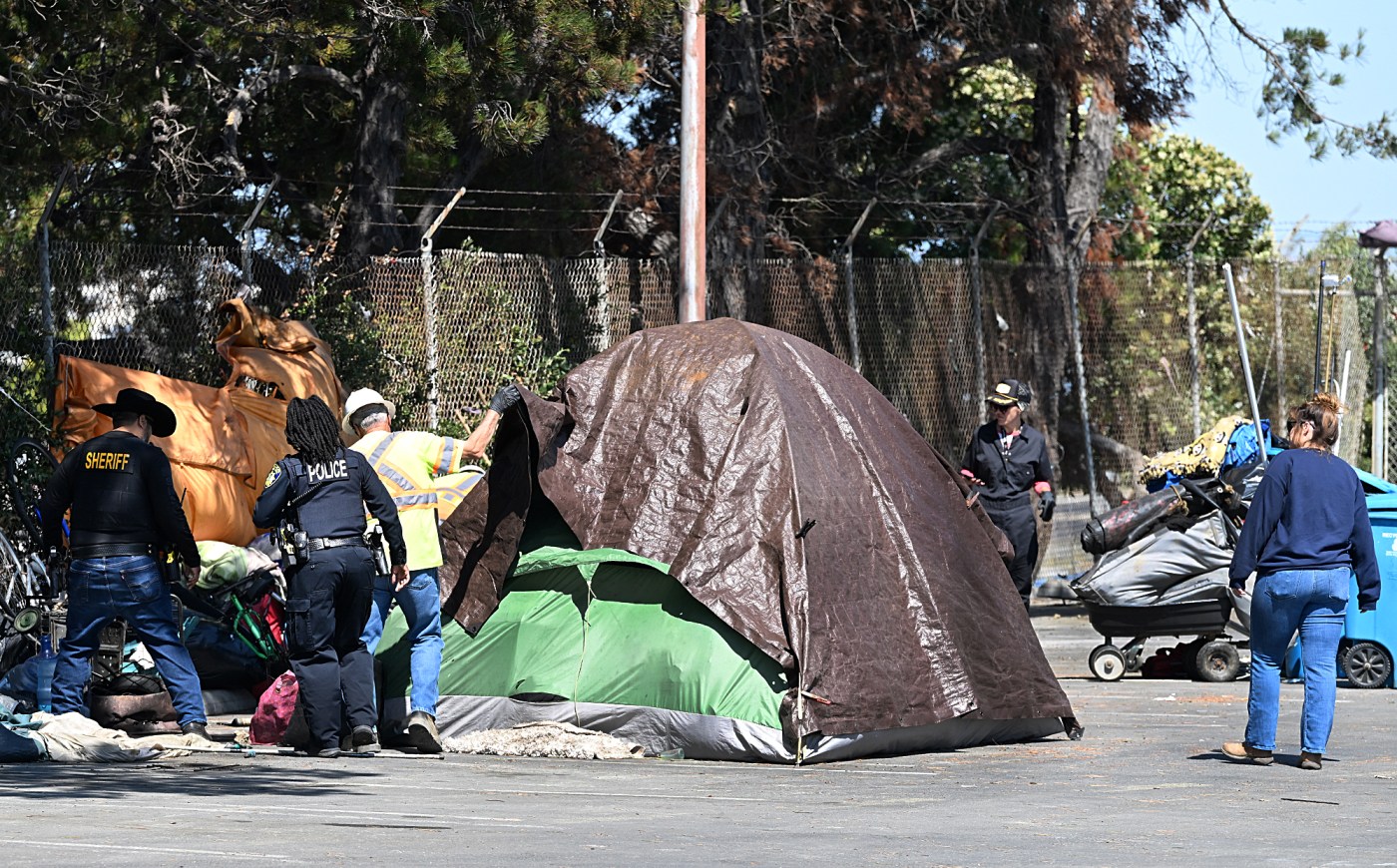Homelessness in Vacaville is reaching critical levels, with both community advocates and local service providers raising concerns about a system stretched to its limits amid rising housing costs, inadequate shelter space, and fragmented public services.
Ashley Banta, Executive Director of Opportunity House, the city’s largest homelessness outreach nonprofit, said homelessness in Vacaville has increased “tremendously” over the past year. Her organization, which provides shelter for about 100 residents annually as well as street outreach, aftercare, and youth-focused programs, has seen a dramatic spike in calls from people experiencing homelessness for the first time.
“We’ve seen a huge increase, largely due to the rising cost of living and the severe lack of affordable housing,” Banta said. “Solano County is also above the state average for first-time homelessness.”
Mercedes Miller looks for a cute outfit in the long aisles of clothing at the newly reopened Opportunity House thrift shop in Vacaville on Peabody Road. (Chris Riley/The Reporter)
While Mayor John Carli called for increased collaboration on homelessness at the Sept. 9 Vacaville City Council meeting, Banta said that partnerships already exist between her organization, the county, and the faith-based community.
“The truth is that we are working together,” she said, “but we need more than that. We need affordable housing.”
Cash assistance programs — even as low as $500 per month — can help prevent eviction, Banta noted. Opportunity House administers such funds, but the demand is overwhelming.
“The need is outgrowing what we are doing,” she said, “but that doesn’t mean that we aren’t making strides.”
Among recent victories, she pointed to the establishment of the Community Action Partnership (CAP) Solano Joint Powers Authority (JPA), a more unified countywide approach to homelessness services. The creation of a $4 million rental assistance fund and the opening of the Vallejo Navigation Center have also marked significant progress.
Still, Banta warned that federal cuts to social safety net programs are worsening the situation. “Without an increase in wages, working families are going to start falling through the cracks,” she said.
Data Underscores Growing Crisis
The 2024 Point-in-Time (PIT) Count, conducted in January by CAP Solano JPA and the Housing First Solano Continuum of Care, recorded 1,725 people homeless in Solano County — a 46.3% increase from the last full unsheltered count in 2022.
The PIT Count is a one-night census required biennially by the U.S. Department of Housing and Urban Development, meaning no unsheltered count was conducted in 2025. Still, local advocates insist the number is likely even higher today.
In Vacaville, Opportunity House and the Vacaville Solano Services Corporation together provided 17,854 bed nights and 55,434 meals to over 400 residents last year. Nearly 38.1% of those served were under 18, largely due to a partnership with Vacaville Unified School District to support homeless students.
Key challenges faced by clients include substance use (26.2%), developmental disabilities (11.7%), domestic violence (18.7%), and mental health struggles (29%). Still, nearly 49% of program exits lead to permanent housing, and 36% lead to temporary solutions.
Grassroots Support Fills the Gaps
For nearly a decade, longtime Vacaville residents Gail and Skip Thomson have operated A Hand Up, a nonprofit providing direct outreach to the city’s unhoused. What began in 2017 with Gail delivering five meals per week near the 99¢ Store on Peabody Road has evolved into a full-time effort serving hundreds.
Skip and Gil Thompson hand off meals to Lacie and her friend, Brenden, near the Vacaville Library. (Chris Riley/The Reporter)
“It grew,” Gail Thomson said. “Once they knew they could trust me, they told me about others — where they were, how to find them.” Today, the Thomsons estimate that around 300 individuals in Vacaville are homeless — including those living in cars, on the street, or couch-surfing.
“Not everyone is getting served because the need is so great,” she said. “And you absolutely can’t arrest your way out of it.”
That statement mirrors the findings of a Solano County civil grand jury report released this year, which critiqued the Vacaville and Fairfield Police Departments for lacking coordination with social service agencies. While acknowledging the efforts of Vacaville’s Community Response Unit, the report found major “coordination gaps” and called for joint training, better communication, and public education to clarify legal boundaries around homelessness enforcement.
The recent U.S. Supreme Court ruling in Grants Pass v. Johnson — allowing cities to enforce camping bans even when no shelter is available — may increase law enforcement encounters with unhoused residents. Yet, the grand jury noted, police are often unequipped to address root causes such as mental illness, addiction, and housing instability.
A Community Response in Motion
To foster better collaboration, the Thomsons recently revived the Vacaville Homeless Roundtable, a monthly gathering of nonprofits, agencies, and residents now hosted by A Hand Up on the third Wednesday of each month.
Operating under the Solano Community Foundation, A Hand Up is uniquely positioned to meet urgent, highly specific needs — whether that means repairing a vehicle that doubles as someone’s home or replacing lost identification necessary for employment.
The nonprofit also hosts the annual Vacaville Homeless Person Memorial every December. At the most recent ceremony, Gail honored 10 people who died on the streets in 2024.
“Each of them were brothers, sisters, fathers, mothers, sons or daughters,” she said. “I hope when you hear their names you will think of them and remember that these are 10 actual people who lived on the streets here.”
Looking Ahead
As fall approaches, the Thomsons are preparing for another challenging winter. Gail spoke recently at the Vacaville Soroptimist meeting explaining the needs for those living on the street and advocating for more help in the way of housing but also court needs. Often, she said, the homeless will be cited but without transportation they have no way to get to the courthouses in Fairfield or Vallejo and so bench warrants stack up. A Zoom court would help, she said, adding that she is pitching the idea as a way for the homeless to take care of such citations.
Meanwhile, advocates like Banta and Thomson agree: progress is being made, but it’s not enough to keep pace with the crisis.
“We’ve got to stop working in silos,” Banta said. “And we’ve got to start building housing. Everything else depends on that.”





